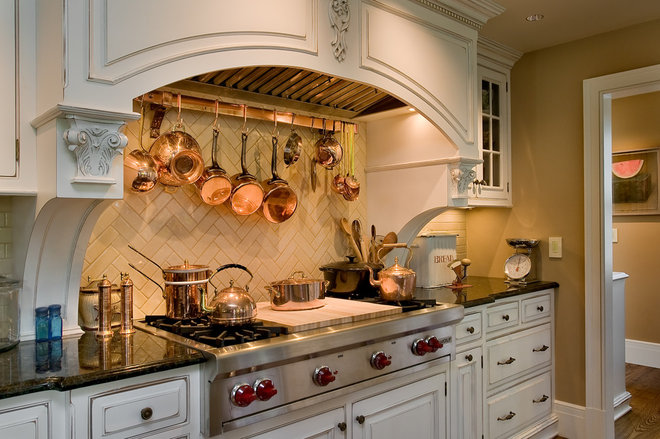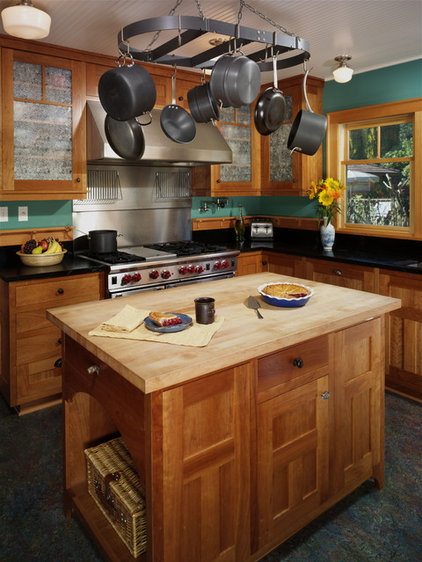How to Clean Your Cookware So It Lasts
Below you'll find daily care and stain removal tips for cookware made of stainless steel, copper, enameled cast iron and more.
|
Good practices for all cookware. No
matter the type of cookware, it is best to wash it as soon as possible
after cooking (cleaning as you go is ideal), and use the least abrasive
cleaning method you can. Washing by hand is always preferable, even for
pots and pans that claim to be dishwasher safe. Washing by hand will prevent the scratches and discoloration that can happen in a dishwasher over time.
The tips and techniques that follow are good general guidelines, but you may also want to check the manufacturer's suggestions. If your cookware is under warranty, using the wrong cleaning product can void your agreement, so it pays to do your homework. |
|
Stainless Steel
Everyday care: Ideally, wash your stainless steel pots and pans by hand soon after use, using regular dish soap. That said, stainless steel pans are one of the few types that can handle a trip through the dishwasher — so if you are in a rush, don't worry about tossing it in with the dishes. Regular cleaning in the dishwasher may create spots or a cloudy surface. Stain removal: To brighten up cloudy or spotty stainless steel, rub the surface with a rag dampened with white vinegar. To treat stains on the bottom of the pan caused by high heat, sprinkle a gentle scouring powder (like Barkeeper's Friend) on a wet sponge or rag to create a paste, and rub it onto the stained area. Rinse with water. |
|
Copper
Everyday care: Wash copper pots and pans by hand, using warm, soapy water. Stain removal: Bring that lustrous finish back to discolored copper by covering your pan with ketchup (yes, ketchup) or lemon. Let the ketchup sit on your pan for at least 10 minutes, then rub the discoloration away with a rag or sponge. Rinse clean with warm water. |
|
Enameled Cast Iron
Everyday care: Allow the pan to cool before washing it — a sudden temperature change may crack the enamel. Soak the pan in warm water first, then use a soft sponge and a mild dishwashing detergent to clean it. Do not use abrasive scrubbing pads, as they can damage the enamel finish. Stain removal: Treat discoloration on the outside of the pan using a mild scouring powder, like Barkeeper's Friend. For tough stains on the inside surface, fill the pan with white vinegar and water and bring to a boil on the stovetop. Turn off the heat and let the pan soak with the vinegar solution, then wash as usual. |
Everyday care: Allow the pan to cool completely before washing it, and never place a hot pan in cold water, which can cause warping. Wash by hand, using a mild dishwashing detergent and warm water — putting your hard anodized pans in the dishwasher may void your warranty.
Stain removal: For stains on the outside only, use a paste of baking soda or a mild scouring powder, like Barkeeper's Friend. Rinse with warm water.
|
Nonstick
Everyday care: Use low to medium heat only — higher temperatures can permanently damage nonstick pans. Wash promptly with a soft sponge and warm, soapy water. If scratches or flakes begin to appear on the nonstick surface of your pan, recycle or toss it immediately. Otherwise those flakes will end up in your food ... not something you want to happen! Stain removal: On the outside only, try using a paste of Barkeeper's Friend or a similar scouring powder. |
|
Cast Iron
Initial seasoning: When you buy a new cast iron pan, wash it by hand in warm, soapy water. Dry the pan with a towel, then put it in a 300-degree oven for about five minutes to dry it completely — even a bit of remaining moisture can cause rust to form on cast iron pans. Next, using a paper towel, rub about a tablespoon of olive or vegetable oil over the surface of the pan, inside and out. Wipe away excess oil — you are aiming for a thin coat. Put the pan in a 300-degree oven for an hour, let it cool, then rub it all over with a clean rag. |
|
Everyday care: Never
use soap on your cast iron pan. Promptly after each use, wipe out the
pan using a paper towel and a bit of oil. If food is stuck on, run the
pan under hot water and scrub the food off with a soft brush or plastic
scouring pad — remember, no soap! Soap will remove the seasoning, which is what creates that wonderful nonstick surface.
Stain removal and long-term care: For really tough, stuck-on food, boil water in your pan on the stovetop for a few minutes, then clean it as usual. Reseasoning occasionally will help maintain the finish. |
Everyday care: Most clay pots must be soaked in water for 15 to 30 minutes before each use. Always place your clay pot in a cold oven so the pot can come up to temperature gradually. Do not use your clay pot on the stovetop or under a broiler, and never put a hot pot on a cold surface — any sudden temperature changes can break it.
Clean it promptly, using a paste of baking soda; rinse with warm water. Soap is not recommended for unglazed clay pots, though you may be able to use a mild soap on clay pots that have been glazed; check with the manufacturer.
Stain removal: Try leaving a paste of baking soda on the discolored area for at least 10 minutes, then wipe away and rinse with water. Do not use abrasive sponges or harsh cleaning products on a clay pot.








